14 Companion Plants for Cantaloupe (With Pictures)
-
Pete Ortiz
- Last updated:
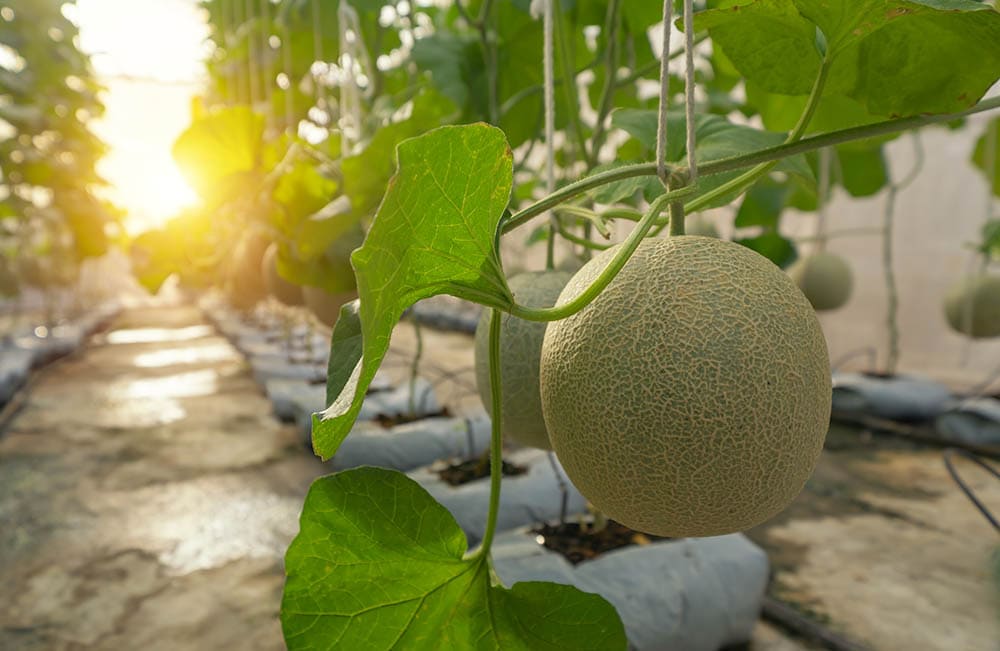
Cantaloupes are melons that belong to the Cucurbitaceae family. They are a delectable treat and excellent for growing in your garden. The abundance of pests that can affect cantaloupe crop production is one factor that makes it difficult to harvest, and although pest repelling is not the only advantage of companion plants, it is unquestionably one of the most important.
Good companion plants can improve soil conditions, deter pests, attract pollinators, and provide shade, which will maximize your cantaloupes’ overall growth conditions and harvests. Some plants don’t make good companions, and it is beneficial to understand which species work best.
The 14 Great Companion Plants for Cantaloupe
1. Nasturtiums

| USDA Hardiness Region: | 9–11 |
| Sun: | 6–8 hours of sun |
| Placement: | Well-draining soil as a groundcover or in containers |
The nasturtium is a vibrant, easy-to-grow flower, and its eye-catching blooms, edible leaves, flowers, and seed pods make it a popular garden companion. The peppery-scented leaves of the Nasturtium plant will attract aphids, keeping them away from your cantaloupe. Their bright colors will add beauty to your garden and attract beneficial insects and pollinators.
Plant them near but not directly next to the cantaloupe for the best results.
2. Marigolds
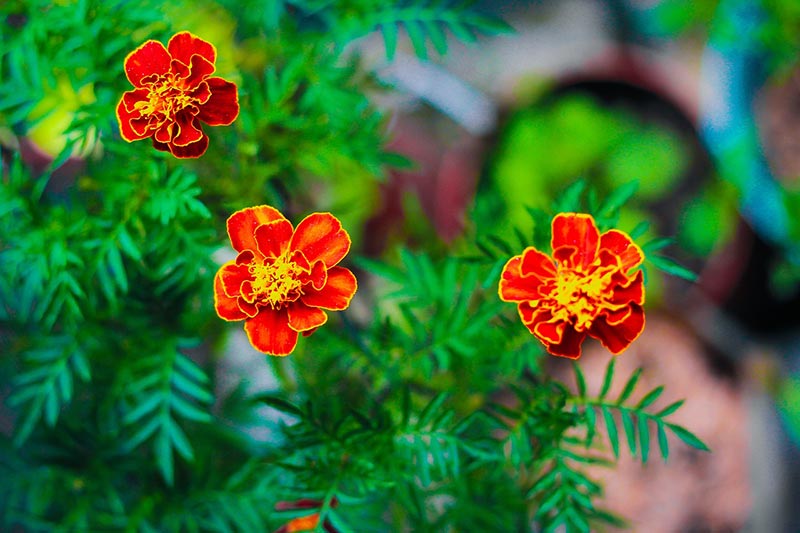
| USDA Hardiness Region: | 2–11 |
| Sun: | Full sun to partial shade |
| Placement: | Afternoon shade, protected from winds and damaging rainfall. |
Not only are Marigolds great companion plants, but they are also gorgeous and come in various colors. Many pests, including aphids, whiteflies, and cucumber beetles, are deterred by their strong fragrance. Marigolds thrive in direct sunlight and can often hold up in sweltering summers. They grow in almost any soil but thrive in relatively fertile, well-drained soil.
Plant Marigolds near your cantaloupe but not in the same bed or container.
3. Lettuce
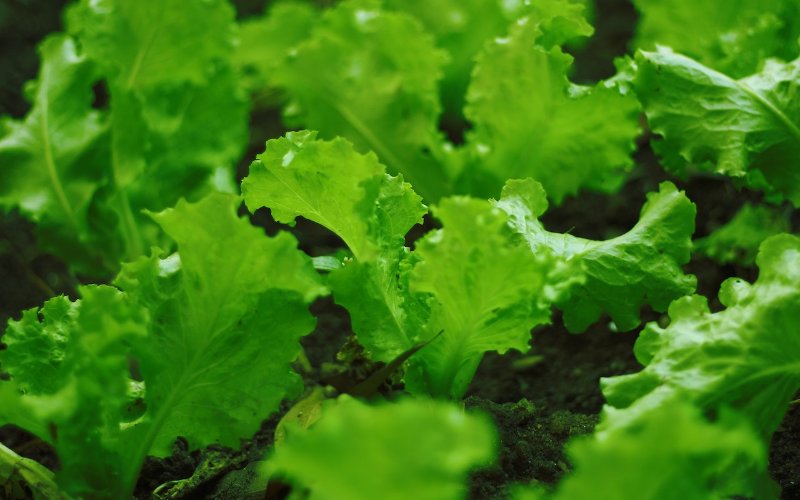
| USDA Hardiness Region: | 2a–11b |
| Sun: | 5–6 hours of sun |
| Placement: | Full sun with afternoon shade, garden, or containers. |
Lettuce is often grown by amateur gardeners, and it makes a great companion plant for cantaloupe. It grows quickly, produces leaves for a long time, and is easy to care for. Because lettuce grows well in raised beds, it is ideal for small spaces. It works well in containers that can be placed on patios or balconies.
Salad greens can be planted amongst your cantaloupe crops to keep the weeds at bay and to provide shade when the sun is intense.
4. Spinach
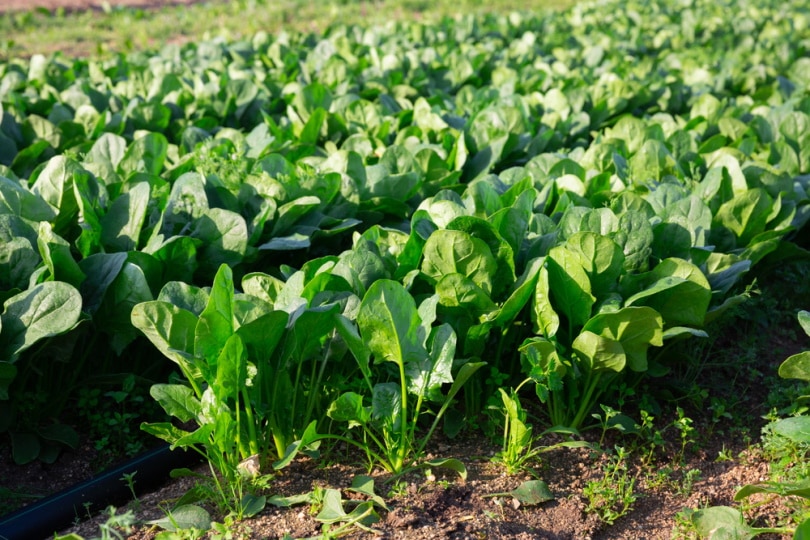
| USDA Hardiness Region: | 5–10 |
| Sun: | Full sun to light shade |
| Placement: | Plant in an area that receives full sun and some shade. Garden beds or pots. |
Spinach is another popular plant that also makes a great companion for cantaloupe. It produces a lot of dark green leaves that are high in vitamin C and can be used in salads and cooking. It thrives in pots which is great because it allows you to harvest the leaves before they are lost to insects.
Like lettuce, mixing spinach with your cantaloupe will prevent weeds and provide shade on hot summer days.
5. Catnip
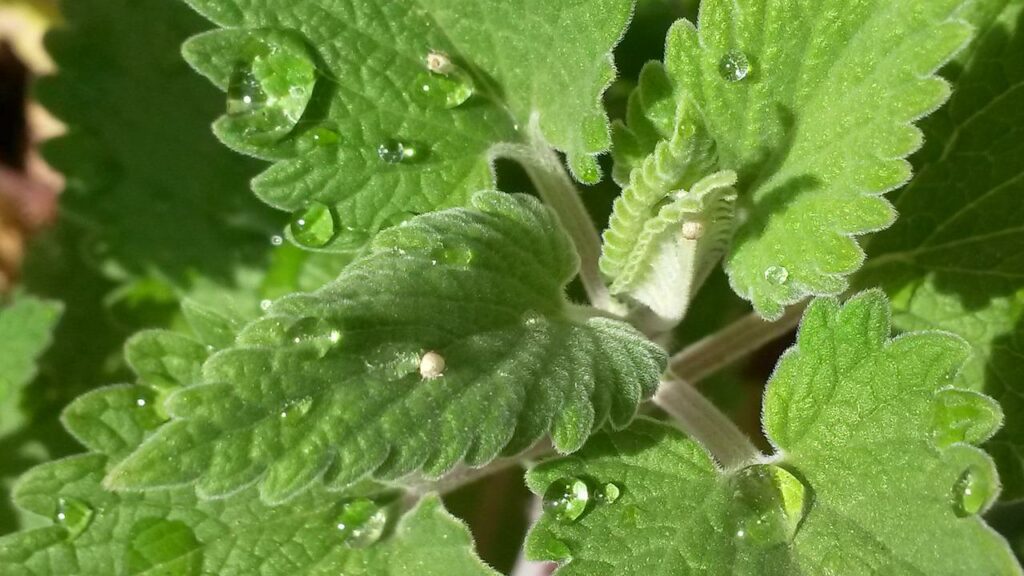
| USDA Hardiness Region: | 3–9 |
| Sun: | 6 hours of direct sunlight a day |
| Placement: | Plenty of sun and well-draining soil. Tall plants around the catnip shouldn’t create too much shade. |
If you have cats, they will appreciate the catnip as much, if not more, than your cantaloupe. Catnip is a low-maintenance herbaceous perennial. The leaves and flowers can be used to flavor dishes and repel insects. Its pungent odor repels flies, aphids, squash beetles, and leafhoppers, making it an excellent companion plant for cantaloupes.
The only slight disadvantage of growing catnip is that it almost always attracts neighborhood cats to your garden.
6. Radish
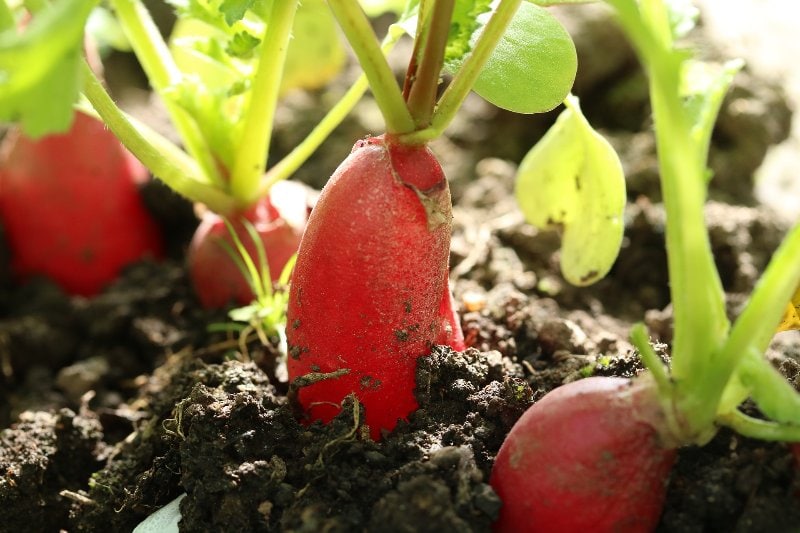
| USDA Hardiness Region: | 2–11 |
| Sun: | Full sun to partial shade |
| Placement: | Open, sunny area without companion plants creating shade |
Radishes are tough root vegetables grown for their crunchy, vibrant, and flavorful roots. They can be planted numerous times in a season and harvested in as little as three weeks. Because they grow and mature quickly, they can provide ground cover, suppress weeds for your cantaloupes, and be harvested before the cantaloupe requires the space. The giant leaves of radish plants attract aphids, making an excellent meal for insects that would otherwise feast on cantaloupe leaves.
7. Collard Greens

| USDA Hardiness Region: | 8–10 |
| Sun: | Full sun |
| Placement: | Fertile, moist soil in full sun but will tolerate a bit of shade |
Collards are a leafy, cool-weather vegetable commonly used for Southern cooking. They can be planted in the spring and fall and are one of the hardiest vegetables; the leaves are sweeter when kissed by frost. Collard greens make excellent companion plants for cantaloupe since they attract aphids. Collards can be planted as a border or interplanted within cantaloupe rows.
8. Bee Balm

| USDA Hardiness Region: | 3–9 |
| Sun: | Full sun |
| Placement: | Moist, well-draining soil. It will grow in partial shade but won’t flower as well. |
Bee balm, also known as wild bergamot, is a fragrant and beautiful scarlet flower loved by hummingbirds, bees, and butterflies when it blooms in mid to late summer. In addition to attracting pollinators, the seed heads will attract birds in the fall and winter, and the flowers are also a natural pest deterrent. Bee balm planted near cantaloupe will not only look beautiful, but it will also provide some pest protection.
9. Tansy
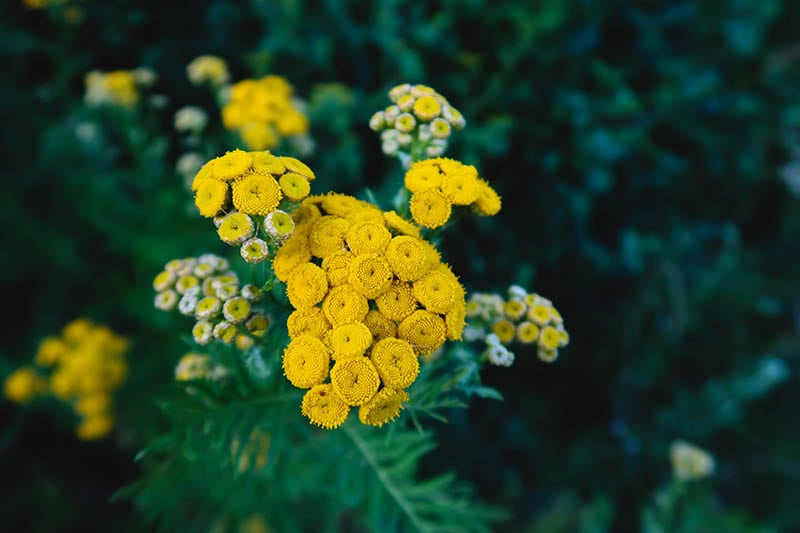
| USDA Hardiness Region: | 3–8 |
| Sun: | Full sun |
| Placement: | Open areas with lots of light and other established plants |
Tansy is a fragrant perennial with dark green leaves and yellow-gold flower clusters. It repels various pests that could hinder the growth of your cantaloupe. It has been shown to protect cantaloupes from striped cucumber beetles, squash bugs, flying insects, and even ants.
While they help deter insects, they must be grown cautiously since the leaves are poisonous to humans, cattle, and horses.
10. Bush Beans
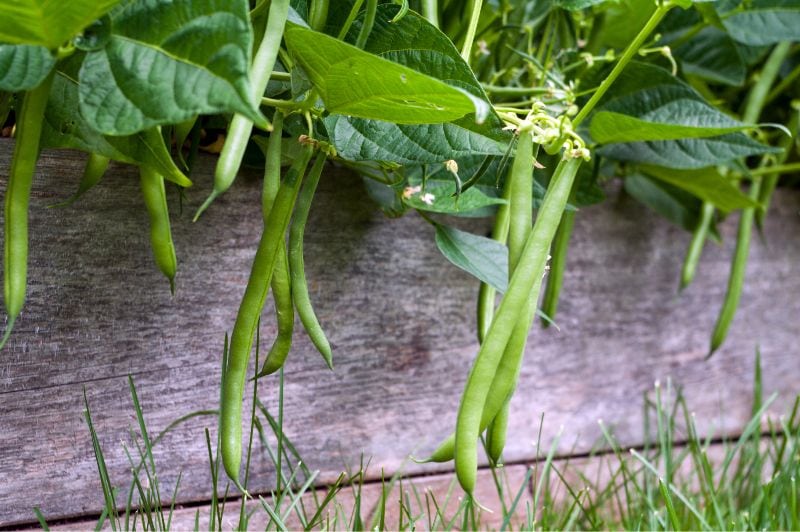
| USDA Hardiness Region: | 3–10 |
| Sun: | 6–8 hours of direct sunlight |
| Placement: | Well-draining soil. They can tolerate some shade but won’t grow as well. |
Bush beans are one of the easiest crops for a new gardener to grow. They are simple to produce from seeds and do not require trellising. Bush beans can add atmospheric nitrogen to the soil, making them an excellent companion plant for cantaloupes. They are also a better choice because they are shorter than pole beans and won’t block as much sunlight.
While alliums are great companions for cantaloupe, they aren’t for bush beans, so keep that in mind when choosing your cantaloupe companions.
11. Corn
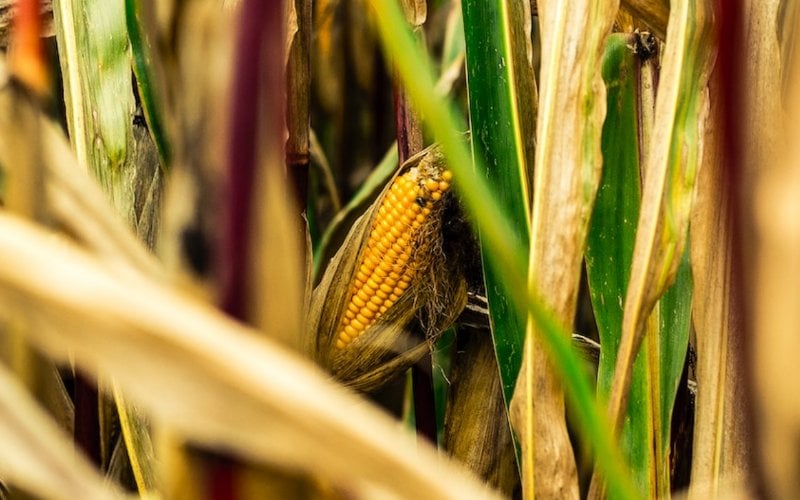
| USDA Hardiness Region: | 4–8 |
| Sun: | Full sun |
| Placement: | Plant in rows 1–2 inches deep |
Growing corn can be challenging but will add a relaxed, agrarian vibe to your landscape. Plus, the enjoyment of eating corn from your garden is so rewarding. Corn is an excellent cantaloupe companion plant because it prefers to be planted in full sun and requires regular watering. Plant corn on the sunniest side of your garden with cantaloupes to protect them from the harsh afternoon sun.
12. Okra
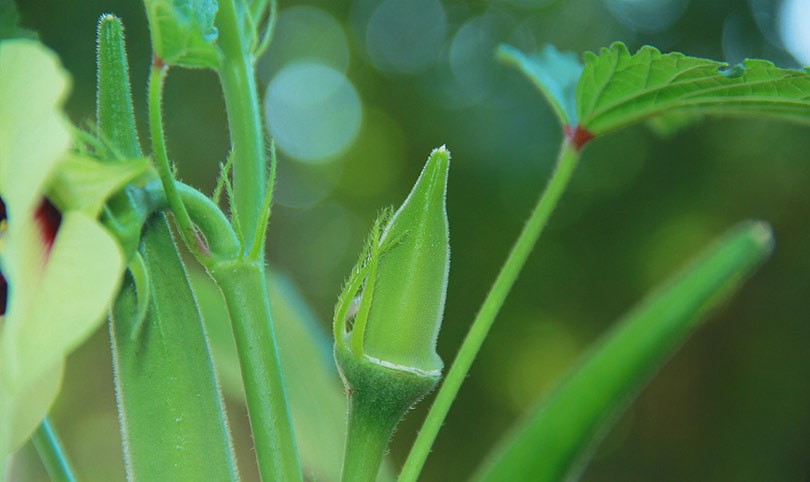
| USDA Hardiness Region: | 9–12 |
| Sun: | Full sun |
| Placement: | Plant in a location that gets at least 6 hours of full sun per day |
Okra plants, like cantaloupes, prefer rich, fertile soil and benefit from regular watering. They grow up and out, allowing cantaloupes to flourish underneath while providing dappled shade during the hottest time of the day. This plant not only produces edible vegetables and delightful flowers but is also high in vitamin A and low in calories, making it a healthy vegetable to grow.
13. Mint
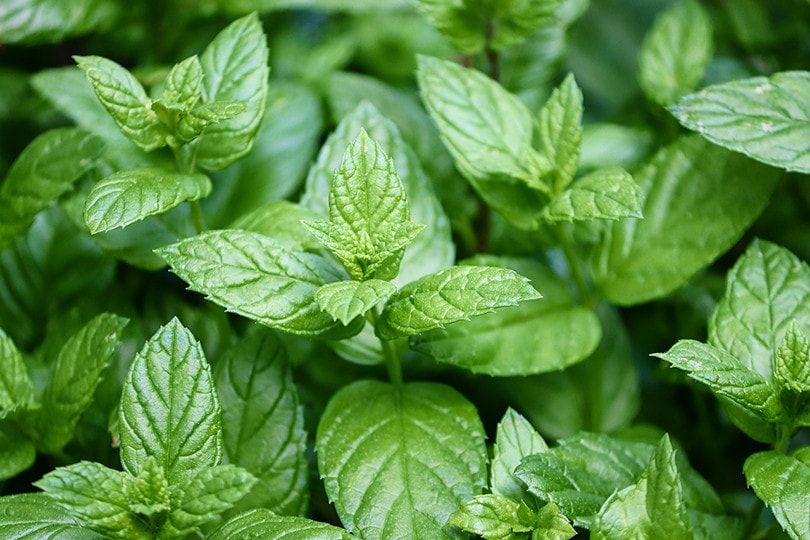
| USDA Hardiness Region: | 3–8 |
| Sun: | Full to partial sun |
| Placement: | Moist soil and afternoon shade. Can be grown in containers. |
Mint is a must-have herb in any garden, and it pretty much grows itself. It has many dietary and health benefits, and its aroma makes it worthy of your garden space. While we love mint and find it refreshing, garden pests don’t feel the same. It repels aphids, whiteflies, and mites. Mint flowers are also popular with pollinators, particularly bees, that will be drawn to your cantaloupe flowers while visiting your garden.
14. Wildflowers
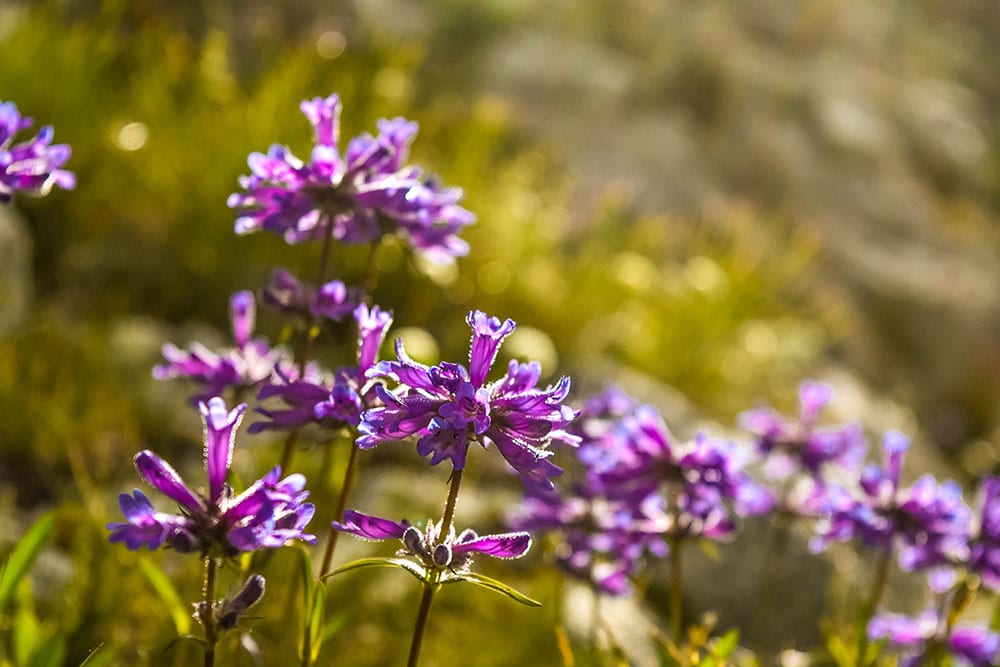
| USDA Hardiness Region: | 1–6 |
| Sun: | Full sun for most |
| Placement: | They will grow in most places. Grow them in containers to benefit your cantaloupes. |
Add a beautiful hue of colors and character to your garden with wildflowers. Wildflowers are excellent companion plants for cantaloupe because they attract pollinators, and an abundance of pollinators can only help to increase your production. Plant flowers in pots close to your cantaloupe instead of in between them. You can place them strategically to adorn your landscape while attracting pollinators for your cantaloupes.
The 4 Worst Companion Plants for Cantaloupe
Fortunately, many plants make companions when growing cantaloupe. However, some plants may limit the melon’s growth, making them unsuitable for companion planting. If you want your cantaloupe to thrive, avoid these plants.
1. Cucumbers
Cucumbers are a favorite meal for cucumber beetles, and they’re suitable to plant near any crop susceptible to the same pests, like cantaloupe. Both cantaloupe and cucumbers love the sun, so they should not be planted together in the garden.
2. Potatoes
Aphids are known to feed on cantaloupes and are drawn to potatoes. Also, potatoes are unsuitable because they’ll compete for sunlight, nutrients, and space.
3. Squash and Pumpkin
Cucumber beetles and squash bugs feed heavily on squash, pumpkins, and cantaloupes. Cantaloupe and squash vines are likely to spread in search of unobstructed sunlight and quickly overtake neighboring plants.
4. Watermelon
Planting cantaloupe and watermelon together is not recommended because they are related and will not produce well. Both plants attract the same pests and may compete for space, nutrients, moisture, and light.
Conclusion
Companion planting is an excellent way to keep pests away from your cantaloupe plants while also adding charm and color to your garden. Though cantaloupe is not the easiest plant to grow, you can quickly increase your chances of success by selecting the best companion plants and establishing a fantastic companion growth system. Happy gardening!
Featured Image Credit: Tavarius, Shutterstock
Contents


